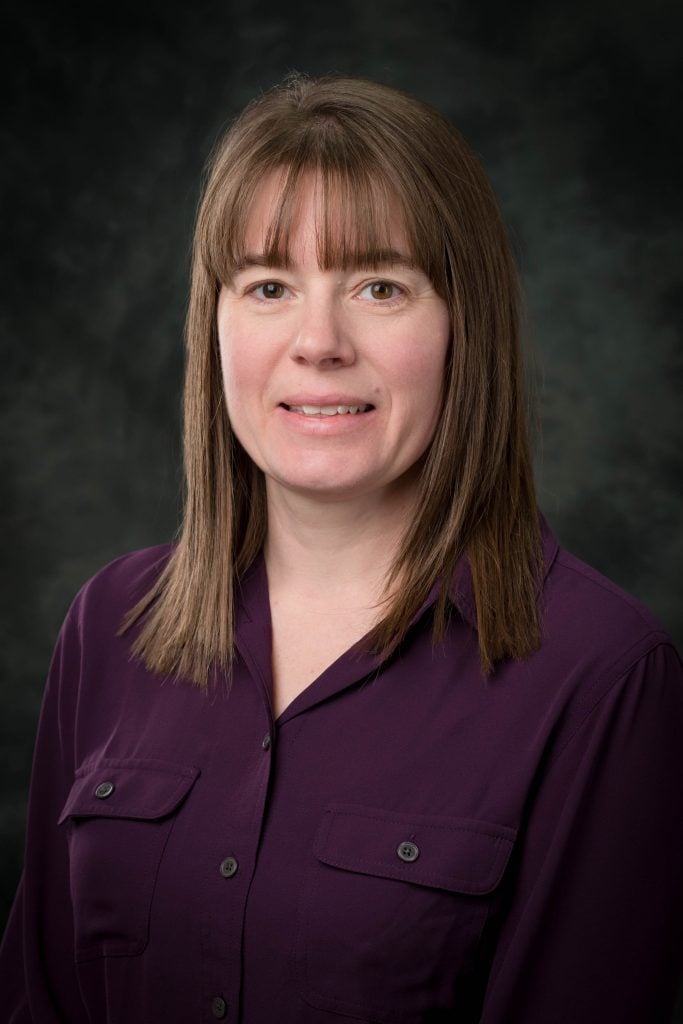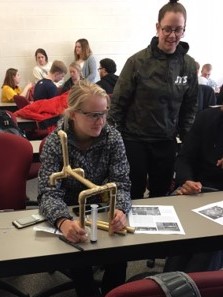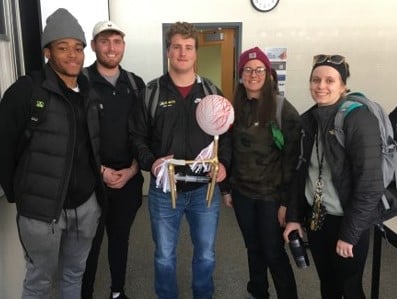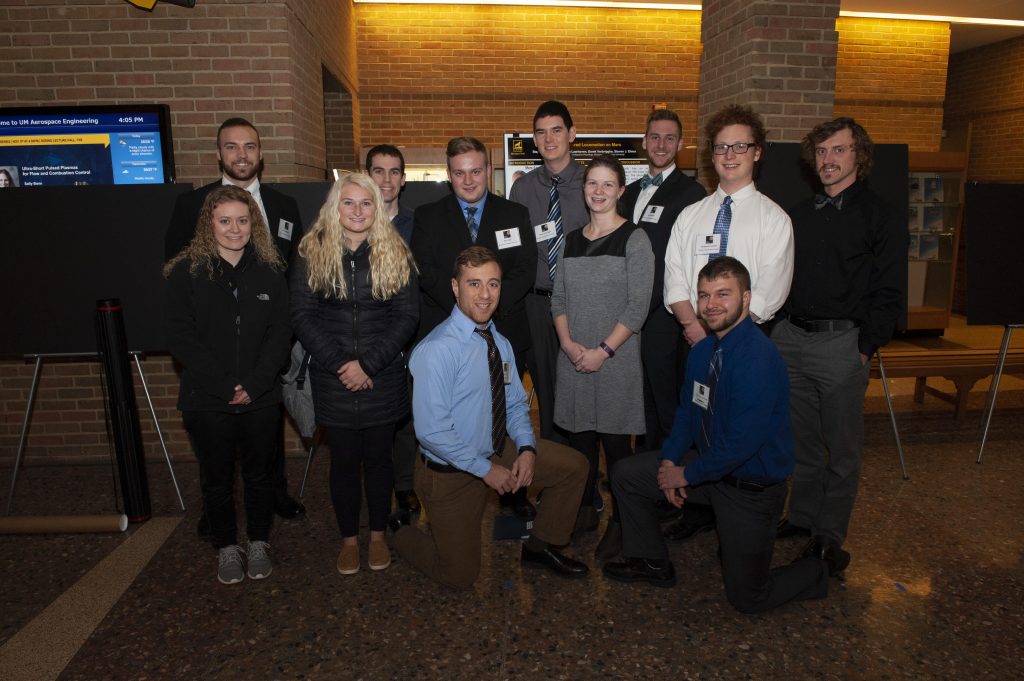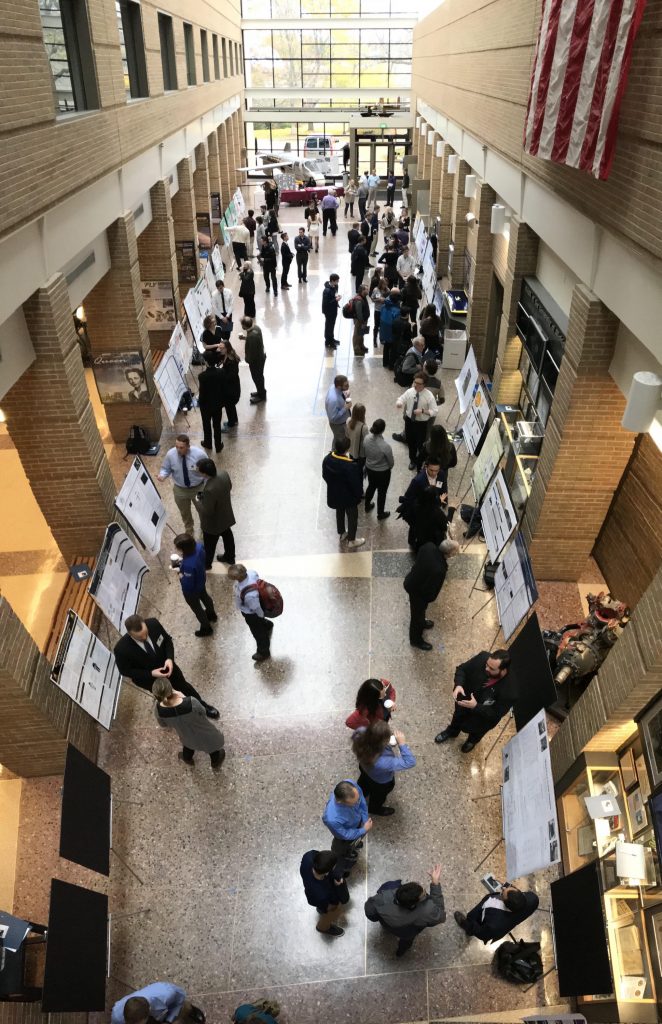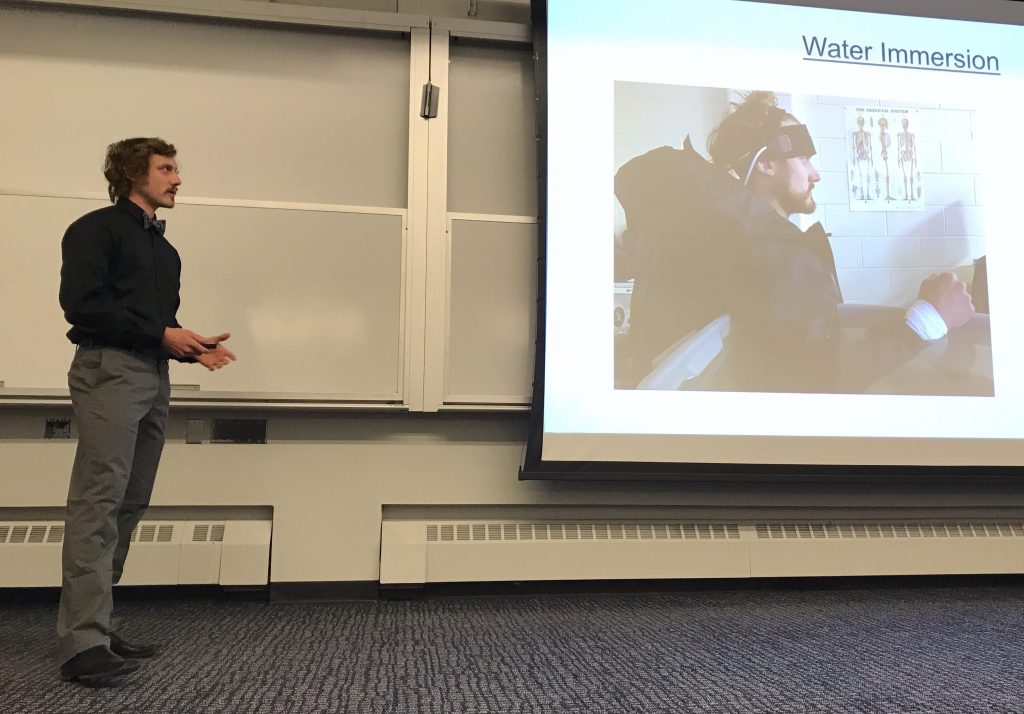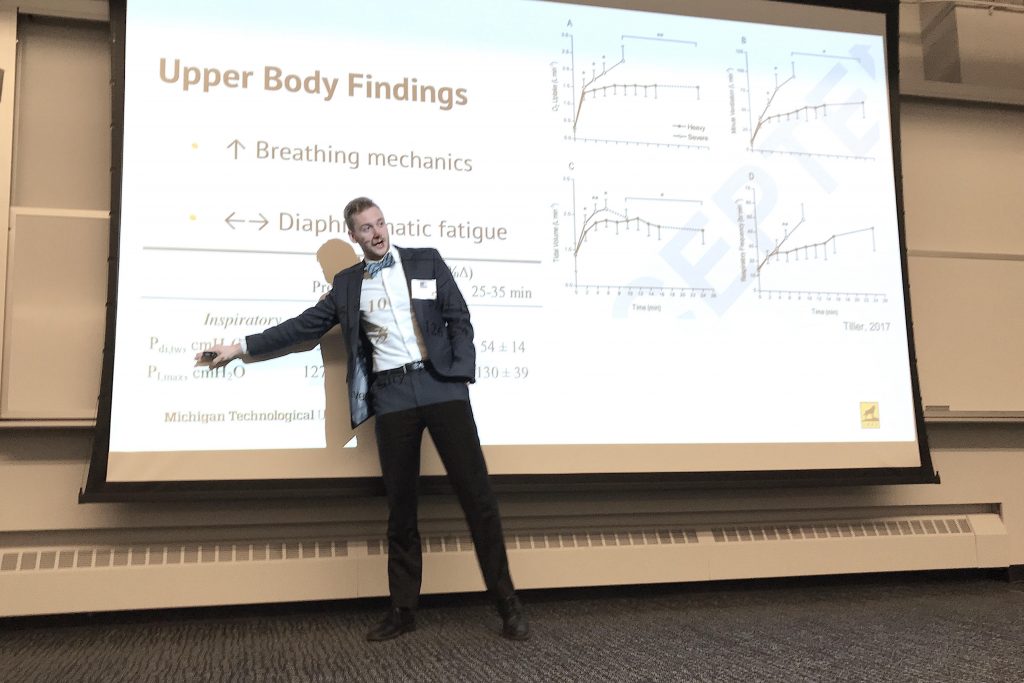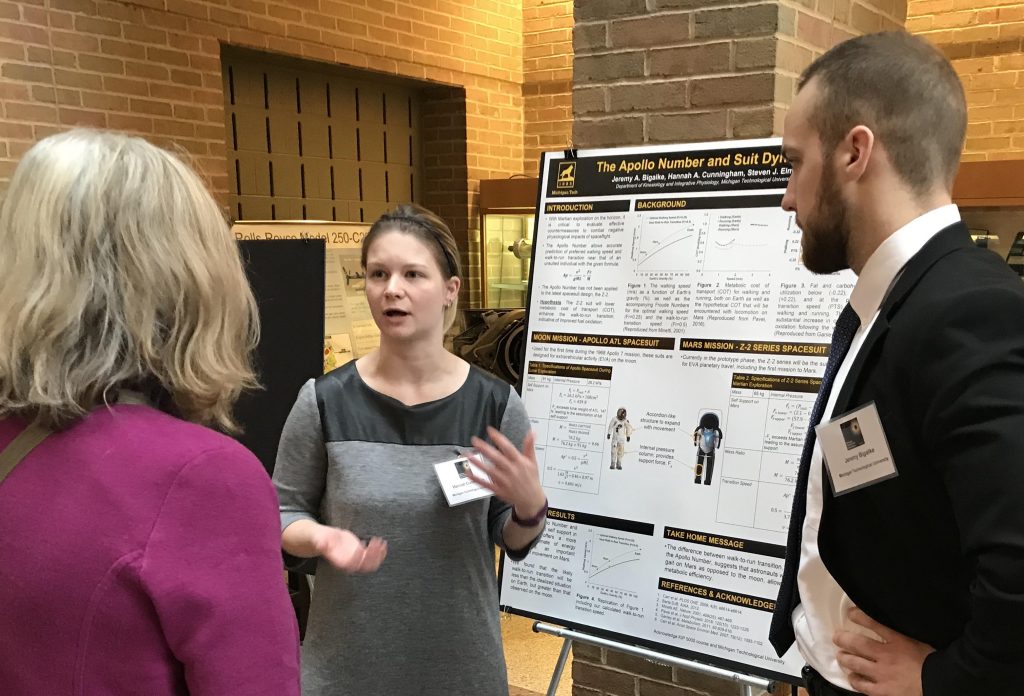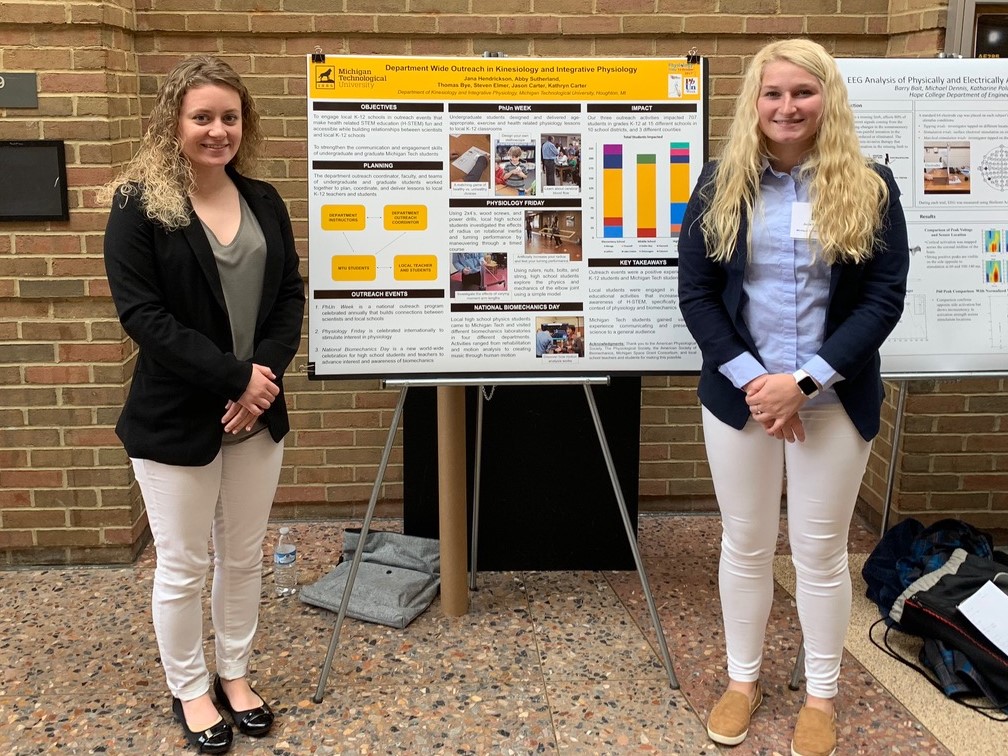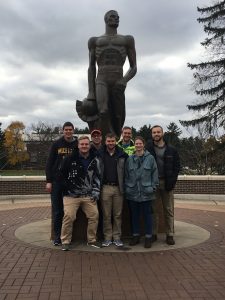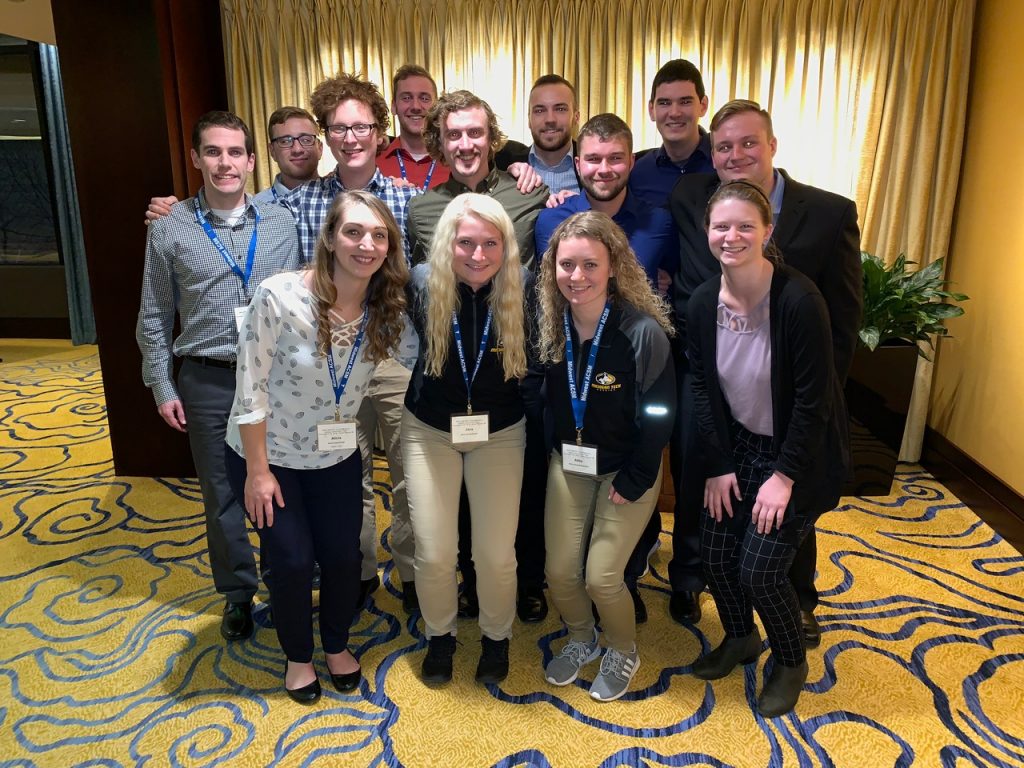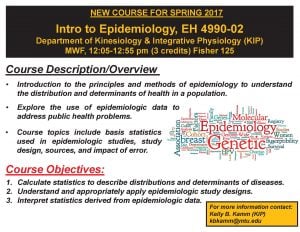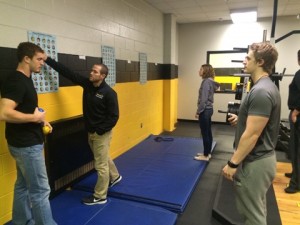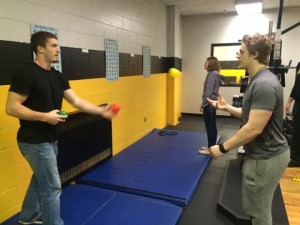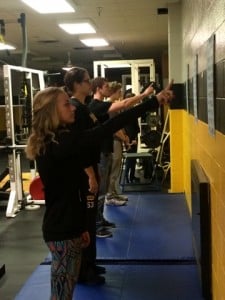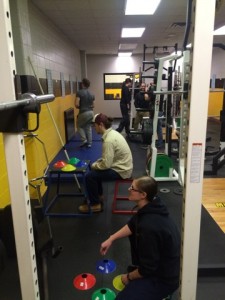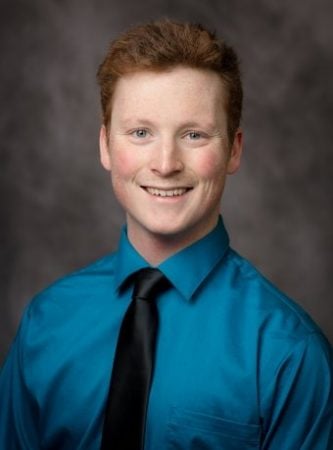 This past week Benjamin Cockfield (Traverse City, MI) successfully defended his master’s thesis: “Acute Physiological Responses to Arm Cranking with Blood Flow Restriction”. Over 45 people attended the Zoom video conference presentation. Ben earned his Bachelor’s in Exercise Science from Michigan Tech University in 2018 and has since been working on his Master’s in Kinesiology. Specifically, Ben conducted his research in the Exercise Physiology Laboratory under the supervision of Associate Professor Steven Elmer.
This past week Benjamin Cockfield (Traverse City, MI) successfully defended his master’s thesis: “Acute Physiological Responses to Arm Cranking with Blood Flow Restriction”. Over 45 people attended the Zoom video conference presentation. Ben earned his Bachelor’s in Exercise Science from Michigan Tech University in 2018 and has since been working on his Master’s in Kinesiology. Specifically, Ben conducted his research in the Exercise Physiology Laboratory under the supervision of Associate Professor Steven Elmer.
For his research, Ben evaluated the cardiorespiratory, metabolic, and perceptual responses to arm cranking with blood flow restriction. Specifically, with blood flow restriction a pressurized cuff is placed over the arm to partially limit blood from leaving the working muscles. This creates a high-intensity workout for the exercising muscles but without overtaxing the heart, lungs, and joints.
In his research, Ben found that arm cranking with blood flow restriction resulted in a small increase in cardiorespiratory strain and effort, but a large increase in metabolic stress. Increased metabolic stress is thought to be an important mechanism for improving muscle size and strength. Long term, results from Ben’s research could have possible implications for upper-body trained endurance athletes (e.g., cross country skiers, rowers, America’s cup sailors), adults recovering from shoulder injuries, wheelchair users, and older adults. Ben was partially supported by a graduate student fellowship from the Michigan Space Grant Consortium.
